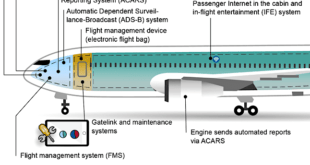Related Articles
As unmanned aircraft systems (UAS) become increasingly prevalent in various sectors, their dual nature as aircraft and information and communication technology systems (ICTS) raises significant cybersecurity concerns. While they excel in providing innovative solutions for industries ranging from agriculture to logistics, each connection point between these devices represents a potential vulnerability that malicious actors can exploit to compromise sensitive information.
UAS Cybersecurity Risks
As unmanned aircraft systems (UAS) become increasingly integrated into various sectors, including commercial, governmental, and recreational uses, they also present significant cybersecurity risks that must be addressed. These risks can have serious implications for national security, public safety, and data privacy. Here are some key UAS cybersecurity risks:
Vulnerabilities in Foreign-Manufactured UAS
Many UAS are manufactured overseas, potentially in countries that may not adhere to the same security standards as domestic manufacturers. These foreign-manufactured drones can harbor vulnerabilities that expose sensitive information to unauthorized entities. Such vulnerabilities could allow unauthorized access to operational data, including flight paths, sensor data, and personal information collected during operations.
Software and Firmware Risks
UAS rely heavily on software and firmware to operate effectively. However, vulnerabilities within these systems can pose substantial data privacy risks. Exploitation of these vulnerabilities can lead to unauthorized access and control of the UAS, allowing malicious actors to hijack drones, manipulate their operations, or even disable them altogether. The consequences of such breaches could range from data theft to public safety hazards, especially in scenarios involving critical infrastructure.
Threats from Peripheral Devices
UAS often communicate with various peripheral devices, including controllers, smartphones, and docking stations. Each point of connection creates potential attack vectors for cybercriminals. If these devices are not secured properly, attackers can exploit them to gain access to the UAS or the data it collects. This interconnectivity highlights the need for a holistic approach to UAS cybersecurity that considers all devices involved in the operation.
Data Privacy Concerns
UAS are equipped with various sensors and cameras that can collect sensitive data, including personal information. The unauthorized access or misuse of this data raises significant privacy concerns. If a drone is hacked, the data it gathers can be exploited for identity theft, corporate espionage, or other illicit activities. Maintaining data confidentiality and integrity throughout the UAS lifecycle is essential to mitigate these risks.
Regulatory Challenges
The rapid expansion of UAS technology often outpaces regulatory measures designed to ensure their safe and secure use. Current regulations may not adequately address the cybersecurity challenges posed by UAS, leading to gaps in protections. Additionally, differing regulations across jurisdictions can create confusion and compliance challenges for UAS operators, increasing the risk of cybersecurity incidents.
Insider Threats
As with many technological systems, UAS are also susceptible to insider threats. Employees with access to UAS operations and data may intentionally or unintentionally compromise security. This could occur through negligence, such as failing to follow security protocols, or through malicious intent, where insiders leak sensitive information or manipulate UAS operations for personal gain.
Evolving Threat Landscape
The cybersecurity landscape is constantly changing, with new threats emerging as UAS technology evolves. Cybercriminals are becoming increasingly sophisticated, employing advanced tactics to exploit vulnerabilities in UAS systems. The rise of artificial intelligence and machine learning can also be leveraged by both defenders and attackers, complicating the cybersecurity landscape further.
The cybersecurity risks associated with unmanned aircraft systems present significant challenges that must be addressed to ensure the safe and effective use of these technologies. By recognizing the vulnerabilities inherent in foreign-manufactured UAS, software and firmware, peripheral devices, and the evolving threat landscape, stakeholders can take proactive measures to enhance their cybersecurity posture. Strengthening regulations, improving data privacy practices, and implementing robust security protocols are essential steps toward mitigating the risks and ensuring the responsible deplo
Mitigation Strategies
As the risks associated with unmanned aircraft systems (UAS) continue to evolve, organizations must adopt proactive measures to safeguard their operations and sensitive data. Effective mitigation strategies are essential for addressing the various vulnerabilities that UAS may present, from cybersecurity threats to data privacy concerns. By implementing a comprehensive approach that encompasses secure design principles, robust cybersecurity frameworks, and best practices for software installation and data management, organizations can significantly enhance their resilience against potential attacks. The following strategies outline key actions that can be taken to minimize risks and ensure the safe and secure operation of UAS in an increasingly complex threat landscape.
Consider Secure by Design UAS
One effective strategy for mitigating these cybersecurity risks is to choose UAS that are built with Secure by Design principles. This approach focuses on integrating security measures into the design and development processes of UAS, minimizing vulnerabilities from the outset and helping to protect data privacy. Secure by Design UAS often include technologies such as encryption, secure boot mechanisms, and robust authentication protocols to ensure that only authorized users and devices can access the system.
Understanding the manufacturing origin of UAS is also critical, as it allows organizations to assess the applicable security standards and regulatory compliance that govern the devices. By choosing UAS from reputable manufacturers that prioritize security in their design processes, organizations can significantly reduce supply chain risks and enhance their overall security posture. Additionally, leveraging software and hardware designed to meet international cybersecurity standards, such as ISO/IEC 27001, can further bolster the resilience of UAS operations against potential threats. By taking these factors into account, organizations can create a more secure operational environment for their UAS while safeguarding sensitive data and maintaining compliance with relevant regulations.
Implement a Zero Trust Framework
Adopting a Zero Trust (ZT) architecture is another crucial step in safeguarding UAS cybersecurity. This framework ensures that every access request across UAS devices is continuously verified and authenticated, significantly reducing the risk of unauthorized access. By limiting access to only those who need it, organizations can minimize their overall attack surface and enhance their security posture.
Take Precautions When Installing Software
When installing software for UAS operations, it is vital to take precautions to safeguard data. Users should thoroughly read software user agreements and privacy policies to understand how their data may be used and where it might be transferred or stored. It is also essential to manually review installation pages and avoid accepting default options, as these may not provide the best security settings. Running all files through an antivirus program before installation can further protect against potential threats. UAS devices should also be isolated from direct access to the enterprise network to prevent potential malware or breaches from spreading to critical systems. Implementing multi-factor authentication and utilizing strong passwords are additional measures that help secure organizational accounts and sensitive data. Regular log analysis and compliance checks should also be conducted to identify any anomalies across UAS data and accounts.
Minimize Data Storage and Network Vulnerabilities
Organizations must maintain robust data-at-rest and data-in-transit procedures for encryption and storage to ensure the confidentiality and integrity of data collected via UAS. After data has been transferred and securely stored, it is vital to delete all collected information from the UAS, including imagery, Global Positioning System (GPS) history, and flight telemetry data. Additionally, secure portable storage devices, such as secure digital (SD) cards, should be removed from UAS prior to storage to prevent unauthorized access to sensitive information.
Minimize Data Vulnerabilities During UAS Flights
To further protect data during UAS operations, maintaining a secure connection with the UAS during flights is critical. Using a virtual private network (VPN), secure Wi-Fi, or other encryption methods can help safeguard the confidentiality and integrity of communication pathways. Activating Local Data Mode (LDM) can block UAS data from being transmitted or shared during flights, reducing the risk of interception. Setting a predetermined ‘Return to Home’ location is essential to minimize GPS-related risks and ensure proper recovery of the UAS. Finally, to prevent unauthorized acquisition of real-time sensitive data, operators should refrain from broadcasting or live streaming during flights.
Conclusion
As the use of UAS continues to grow, so too does the need for robust cybersecurity measures to protect against potential vulnerabilities. By implementing Secure by Design principles, adopting a Zero Trust framework, and taking proactive measures during software installation and data management, organizations can effectively mitigate risks and safeguard sensitive information. By prioritizing UAS cybersecurity, stakeholders can enjoy the benefits of this innovative technology while minimizing potential threats to their data and operations. Proactive measures and a comprehensive understanding of the evolving threat landscape will be crucial in safeguarding sensitive data and protecting public safety as UAS technology continues to advance.
 International Defense Security & Technology Your trusted Source for News, Research and Analysis
International Defense Security & Technology Your trusted Source for News, Research and Analysis

